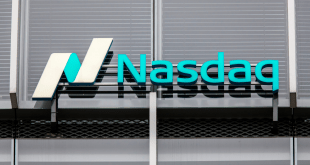On July 23, 2025, the United States and Japan announced a historic trade agreement, reshaping their economic partnership and sparking global financial market optimism. This landmark deal, featuring a 15% tariff on Japanese imports and a $550 billion Japanese investment in US infrastructure, has driven the S&P 500 and Nasdaq Composite to record highs. By reducing trade tensions and promoting collaboration, the agreement has shifted investor focus from safe-haven assets like Treasuries to equities, reflecting strong confidence in economic growth. This article examines the agreement’s key components, its impact on financial markets, the broader economic context, and implications for investors as of July 23, 2025.
Core Components of the Agreement
After months of rigorous negotiations, the US-Japan trade deal strengthens bilateral economic ties. In 2024, two-way trade reached $230 billion, with Japan holding a $70 billion trade surplus. The agreement’s key provisions include:
15% Tariff on Japanese Imports: This aims to balance US industry protection with trade promotion.
$550 Billion Japanese Commitment to US Infrastructure: This investment is expected to generate thousands of jobs across the United States.
Removal of Regulatory Barriers: This provision enables US automakers to access Japan’s market more easily.
Described by the White House as a strategic trade and investment partnership, the deal aims to address trade imbalances while fostering mutual prosperity. However, some US automakers express concern that the tariff may hinder their competitiveness, a point of caution amid the deal’s otherwise largely positive reception.
Financial Markets Rally
The trade agreement has triggered a robust response in financial markets, with US stock indices soaring and Treasury yields rising as investors pivot to riskier assets.
S&P 500: Closed at 6,347 points on July 23, 2025, up 0.59% daily, with a monthly gain of 4.18% and a yearly rise of 16.94%.
Nasdaq Composite: Hit 20,884.27 on July 17, 2025, gaining 0.74%, marking six record closes in seven sessions.
Dow Jones Industrial Average: Reached 44,484.49, up 0.52% on July 17, 2025, reflecting broad market strength.
These significant gains stem from optimism over reduced trade tensions, strong corporate earnings, and resilient consumer spending, all contributing to a bullish market sentiment.
Treasury and Global Bond Trends
The US 10-Year Treasury Yield climbed to 4.39% on July 23, 2025, rising 0.04 points daily and 0.09 points monthly, ending a three-day decline. This uptick signals a clear shift from safe-haven Treasuries to equities, driven by confidence in the deal’s potential for job creation and infrastructure benefits. Globally, higher bond yields in emerging markets like Brazil and India contrast with lower yields in developed economies such as Japan and Germany, highlighting the diverse economic conditions influenced by the new agreement.
Economic Context Driving Sentiment
With few major US data releases, the trade deal has largely dominated market sentiment. Recent economic indicators provide a supportive backdrop:
Consumer Price Index (July 15, 2025): Rose 0.3% month-over-month and 2.7% year-over-year, indicating stable inflation.
June 2025 Jobs Report: Showed 147,000 new payrolls, exceeding forecasts, with unemployment at 4.1%.
Strong Consumer Spending: Reflected in recent corporate earnings, further fuels overall optimism.
However, a yield curve inversion (10-year minus 2-year spread at 0.52% on July 22, 2025) raises a note of caution, though current conditions largely support continued economic growth.
Sector-Specific Impacts
The agreement’s effects vary across industries. US automakers stand to benefit from improved market access in Japan, but they also express concerns that the 15% tariff could potentially undermine their competitiveness, necessitating close monitoring of its long-term impact. Meanwhile, the technology sector, led by major firms, continues to drive the Nasdaq’s strong performance, capitalizing on the positive market sentiment and showcasing its resilience amid broader economic shifts.
Guidance for Investors
Investors are broadly advised to remain vigilant and track several key factors:
Ongoing US Trade Negotiations: Developments with other nations could significantly influence global markets.
Upcoming Economic Data: Releases like nonfarm payrolls and consumer sentiment will provide further clarity on the economy’s trajectory.
Yield Curve Shifts: While rising yields currently signal growth confidence, significant shifts in the yield curve could alter market expectations.
The agreement’s strong focus on job creation and infrastructure development suggests a promising long-term outlook for the US economy, though short-term market volatility remains a possibility.
The US-Japan trade agreement of July 23, 2025, marks a significant turning point, driving record highs in the S&P 500 and Nasdaq and pushing Treasury yields upward. By fostering collaboration and easing trade tensions, the deal has spurred a robust risk-on market rally. Despite some concerns from US automakers, the overall market response has been overwhelmingly positive. Investors should continue to monitor trade developments and key economic indicators to assess the sustainability of this rally, as this agreement is poised to continue shaping global financial markets.

 Noor Trends News, Technical Analysis, Educational Tools and Recommendations
Noor Trends News, Technical Analysis, Educational Tools and Recommendations




